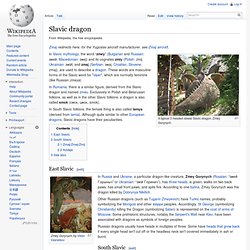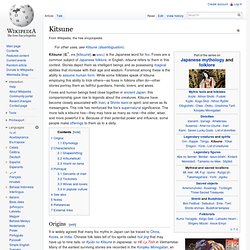

Domovoi. A domovoi or domovoy (Russian: домово́й, IPA: [dəmɐˈvoj]; literally, "[he] from the house") is a house spirit in Slavic folklore. The plural form in Russian can be transliterated domoviye or domovye (with accent on the vowel after the v). Domovye are masculine, typically small, bearded, and sometimes covered in hair all over. According to some traditions, domovye take on the appearance of current or former owners of the house and have a grey beard, sometimes with tails or little horns. There are tales of neighbours seeing the master of the house out in the yard while in fact the real master is asleep in bed.
It has also been said that domovye can take on the appearance of cats or dogs, but reports of this are fewer than of that mentioned before.[2] Other stories either give them completely monstrous appearance, or none at all. The actions performed by a domovoi vaguely resemble (but are not limited to) those of poltergeists and are not necessarily harmful. Slavic dragon. Zmaj redirects here, for the Yugoslav aircraft manufacturer, see Zmaj aircraft.

A typical 3-headed obese Slavic dragon, Zmey Gorynych. In Slavic mythology, the word “zmey” (Bulgarian and Russian: змей, Macedonian: змеj) and its cognates zmiy (Polish: żmij, Ukrainian: змій) and zmaj (Serbian: змај, Croatian, Slovene: zmaj), are used to describe a dragon. These words are masculine forms of the Slavic word for "viper", which are normally feminine (like Russian zmeya). In Romania, there is a similar figure, derived from the Slavic dragon and named zmeu. Exclusively in Polish and Belarusian folklore, as well as in the other Slavic folklore, a dragon is also called smok (смок, цмок, smok).
In South Slavic folklore, the female thing is also called lamya (derived from lamia). East Slavic[edit] Other Russian dragons (such as Tugarin Zmeyevich) have Turkic names, probably symbolizing the Mongols and other steppe peoples. Russian dragons usually have heads in multiples of three. Kitsune. Kitsune (狐?

, IPA: [kitsɯne] ( Origins[edit] Japan is home to two red foxsubspecies: the Hokkaido fox (Vulpes vulpes schrencki, pictured), and the Japanese red fox (Vulpes vulpes japonica). It is widely agreed that many fox myths in Japan can be traced to China, Korea, or India. Chinese folk tales tell of fox spirits called huli jing that may have up to nine tails, or Kyūbi no Kitsune in Japanese, or Hồ Ly Tinh in Vietnamese. Etymology[edit] The full etymology is unknown. Many etymological suggestions have been made, though there is no general agreement: According to Nozaki, the word kitsune was originally onomatopoetic.[3] Kitsu represented a fox's yelp and came to be the general word for fox. One of the oldest surviving kitsune tales provides a widely known folk etymology of the word kitsune.[5] Unlike most tales of kitsune who become human and marry human males, this one does not end tragically:[6][7] So every evening she stole back and slept in his arms.[5] Characteristics[edit]
Baku (spirit) Baku (獏 or 貘?)

Are Japanese supernatural beings that devour dreams and nightmares. They have a long history in Japanese folklore and art, and more recently have appeared in Japanese anime and manga (see examples cited below). The Japanese term baku has two current meanings, referring to both the traditional dream-devouring creature and to the zoological tapir (e.g., the Malayan Tapir).[1] In recent years, there have been changes in how the baku is depicted. The traditional Japanese nightmare-devouring baku originates in Chinese folklore and was familiar in Japan as early as the Muromachi period (14th-15th century).[2] Hori Tadao has described the dream-eating abilities attributed to the traditional baku and relates them to other preventatives against nightmare such as amulets.
Kaii-Yōkai Denshō Database, citing a 1957 paper, and Mizuki also describe the dream-devouring capacities of the traditional baku.[3] Dream-eating, tapir-shaped baku have also entered non-Japanese popular culture: